Hosta Halcyon Profile
Written by Iris
Aug 04 2021
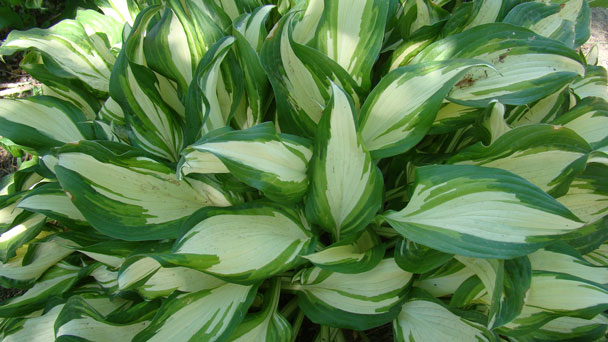
Hosta Halcyon is one of the most popular perennials in shady areas and there are now hundreds of varieties to choose from. The plants form sturdy piles of leaves covered with lily-like flowers. This larger specimen chooses to have thick powdery blue-green leaves. Lavender flowers appear in July. Also suitable for growing in mixing containers or POTS. Hosta Halcyon are completely dormant in the fall and can remove dying leaves any time until mid-spring. It is easy to divide in spring or fall, but plants may be left alone for years.
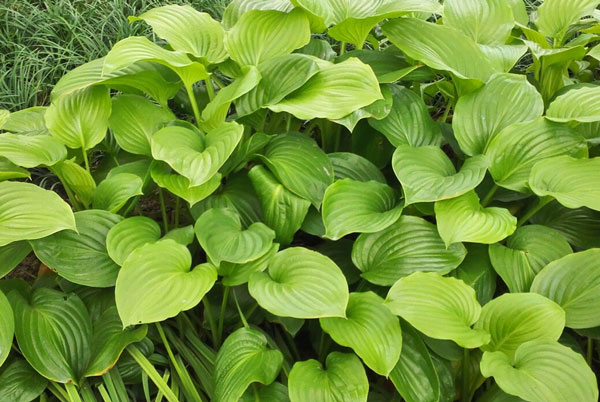
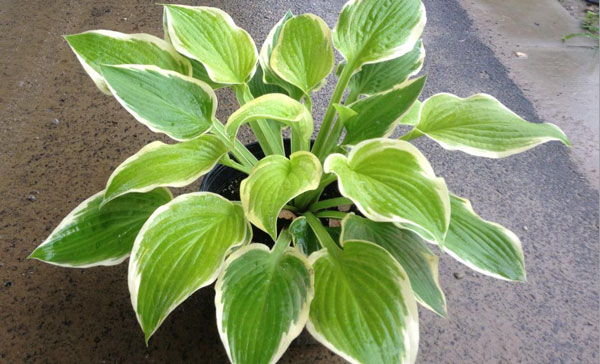
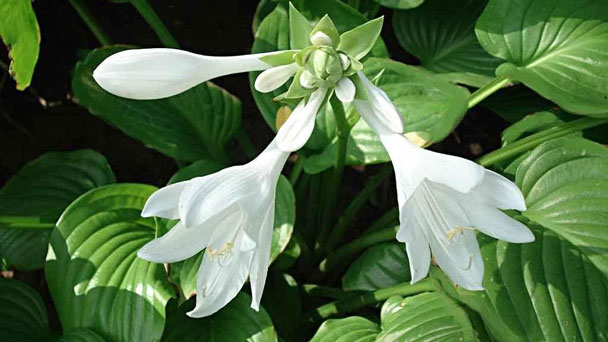
Hosta Halcyon scorch causes leaves to turn yellow and crispy at the edges. Plants grown in full sun and poor soil are more susceptible. Protect hostas from intense sunlight, especially during the heat of midday and water early in the day. Remove scorched leaves and consider transplanting to a shadier location in your garden.
Frost damage can affect Hosta halcyon plants during early spring. Plants will appear limp and crinkled. If frost is in the forecast, cover your Hosta Halcyon and water well. Remove any frost-damaged foliage as it is susceptible to diseases. Plants will often produce a second flush of leaves after frost damage.
Foliar nematodes are tiny roundworms that invade the tissue of Hosta Halcyon leaves, creating yellow and brown discoloration between leaf veins. Foliar nematodes spread primarily via water, but can also be transferred between plants by unsterilized garden tools. To prevent their spread, avoid overhead watering and sanitize your tools. Infected plants should be destroyed; do not compost.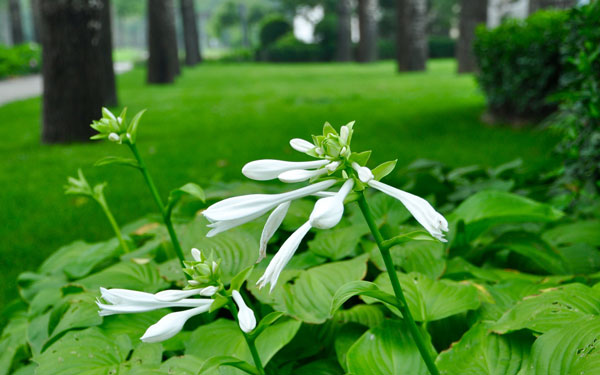
Ideas for using hosta plants in your garden:
Bold-leaved hostas provide contrast to lacy plants such as ferns and astilbe, or linear foliage such as sedges or liriope.
Keep things in proportion—supersized Shadowland® 'Empress Wu' will overshadow a small fern.
Pair with summer-dormant plants such as Virginia bluebells to provide long-lasting interest.
Hosta leaves are great additions to a bouquet or foliage arrangements.
Use larger hosta leaves as placemats for alfresco meals.
Hostas with white-variegated leaves or white flowers, like Shadowland® Etched Glass make great additions to a moonlight garden.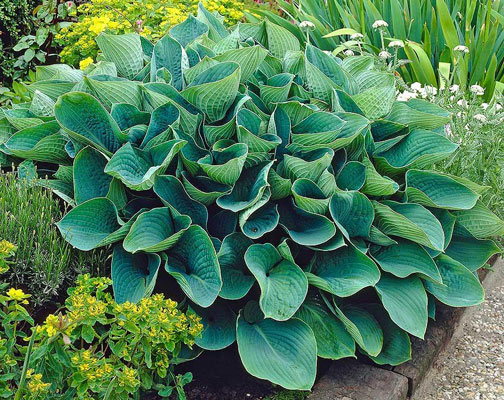
Hosta Halcyon PictureHosta Halcyon InfoEcological Habits of Hosta HalcyonHosta Halcyon Distribution AreaHow to Grow and Care for Hosta HalcyonUses of Hosta HalcyonHosta Halcyon Common Pests/DiseasesHosta Halcyon Design Tips
Hosta Halcyon Picture

Hosta Halcyon Info
| Sun Exposure | Full |
| Soil Type | Moist, well-drained |
| Soil pH | Acidic |
| Bloom Time | Spring, summer, fall |
| Sun Exposure | Full |
| Soil Type | Moist, well-drained |
| Soil pH | Acidic |
| Bloom Time | Spring, summer, fall |
Ecological Habits of Hosta Halcyon
Hosta Halcyon is easy to grow in evenly moist, organic matter rich, well drained soil with partial to full shade. Hosta Halcyon prefer best partial shade (some morning sun or sun-dappled conditions). Established Hosta Halcyon plants have some tolerance for dry shade (especially those with thick leaves), but the soil should never be allowed to dry out. Consistent moisture can best be achieved in full size and mass form. It is best to apply water directly to the soil under the leaves. Divide plants as needed in spring or fall. Division is usually easiest in the early spring, before the leaves unfold. Plant in a windbreak. Hosta Halcyon are generally considered low maintenance perennials.Hosta Halcyon Distribution Area
Hostas originated in the wild amongst the forests in China. But they were brought into gardens by Chinese gardeners before the time of Christ. And from here they spread to other Asian gardeners, particularly in Japan. So ever more beautiful colours and fancy variegations have been bred by gardeners for well over 2,000 years.
How to Grow and Care for Hosta Halcyon
How to Grow Hosta Halcyon
- With Seeds
- With Division
How to Care for Hosta Halcyon
- Light
- Soil
- Water
- Temperature and Humidity
- Fertilizer
- Pruning

Uses of Hosta Halcyon
Ornamental Uses
Halcyon Hosta features dainty spikes of lavender bell-shaped flowers rising above the foliage in mid summer. Its attractive textured heart-shaped leaves emerge blue in spring, turning bluish-green in color throughout the season. The fruit is not ornamentally significant.Hosta Halcyon Common Pests/Diseases
Hosta Halcyon Virus X causes mottled leaf coloring, brown spots, or leaves that appear lumpy twisted. It is spread from one plant to another by contaminated tools or hands, so always clean and sterilize tools. Infected plants should be disposed of, not composted. Learn more from Missouri Botanical Garden.Hosta Halcyon scorch causes leaves to turn yellow and crispy at the edges. Plants grown in full sun and poor soil are more susceptible. Protect hostas from intense sunlight, especially during the heat of midday and water early in the day. Remove scorched leaves and consider transplanting to a shadier location in your garden.
Frost damage can affect Hosta halcyon plants during early spring. Plants will appear limp and crinkled. If frost is in the forecast, cover your Hosta Halcyon and water well. Remove any frost-damaged foliage as it is susceptible to diseases. Plants will often produce a second flush of leaves after frost damage.
Foliar nematodes are tiny roundworms that invade the tissue of Hosta Halcyon leaves, creating yellow and brown discoloration between leaf veins. Foliar nematodes spread primarily via water, but can also be transferred between plants by unsterilized garden tools. To prevent their spread, avoid overhead watering and sanitize your tools. Infected plants should be destroyed; do not compost.

Hosta Halcyon Design Tips
The wide range of sizes among hosta plants inspires a variety of uses, from a striking focal point to edging or ground cover. Hostas contribute the all-important element of texture to a garden, and a collection with varying foliage colors and shapes is visually interesting even without flowers.Ideas for using hosta plants in your garden:
Bold-leaved hostas provide contrast to lacy plants such as ferns and astilbe, or linear foliage such as sedges or liriope.
Keep things in proportion—supersized Shadowland® 'Empress Wu' will overshadow a small fern.
Pair with summer-dormant plants such as Virginia bluebells to provide long-lasting interest.
Hosta leaves are great additions to a bouquet or foliage arrangements.
Use larger hosta leaves as placemats for alfresco meals.
Hostas with white-variegated leaves or white flowers, like Shadowland® Etched Glass make great additions to a moonlight garden.

Hosta Halcyon Companion Plants
Many plants grow well with hostas, such as: spring bulbs, ferns, wildflowers, astilbe, golden hakone grass, lungwort, bugloss, bleeding heart, euphorbia, and hellebores.
Latest Updated
- Benefits of Bugleweed - 7 Science-backed Health Benefits
- Bugleweed Dangers & Side Effects - Is It Poisonous?
- How to Plant Evergreen Trees - What You Should Know
- When to Plant Evergreens - Grow Guide for Evergreen Trees
- 12 Wonderful Evergreen Shrubs for Your Garden
- 12 Popular Evergreen Plants with Pictures for Beginners
- When And How To Prune A Lilac Bush Like a Pro
- How to Grow & Care for Lilac Vine (Hardenbergia Violacea)
- Japanese Lilac Tree (Syringa Reticulata) Care & Propagation Guide
- Shumard Oak Pros and Cons - What to Know
Popular Articles
- Winter maintenance of Antirrhinum Majus
- How to Grow Terminalia Mantaly Tree
- How to Grow and Care for Crossostephium Chinense
- How to grow Antirrhinum Majus in spring
- Peristeria Elata (Dove Orchid) Profile: Info & Care Guide
- Underwatered Snake Plant (Sansevieria Trifasciata) - Signs And How To Fix
- How to Care for Brazilian Jasmine Plant (Mandevilla Sanderi)
- How to Grow & Care for Graptopetalum Purple Delight in Summer
- Rosa Chinensis (China Rose): Plant Growing & Care Tips
- How to Care for Baby Sun Rose (Aptenia Cordifolia)